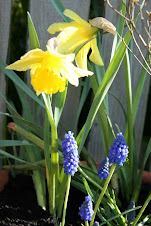 When it came to choosing my plants I was quite lucky; my mum has a huge garden with similar soil and conditions to mine and was quite willing to donate some plants to my garden. We were easily able to dig up quite a large number of plants, even some small trees, and not really notice the gaps. It was an advantage taking them from here because a) I knew they were the type of plants that would thrive in my garden, b) they were free!Several other people started offering donations, and I accepted them all. I decided I would just see what would grow. I did buy some plants from the garden centre too, but I still think the free ones are best!
When it came to choosing my plants I was quite lucky; my mum has a huge garden with similar soil and conditions to mine and was quite willing to donate some plants to my garden. We were easily able to dig up quite a large number of plants, even some small trees, and not really notice the gaps. It was an advantage taking them from here because a) I knew they were the type of plants that would thrive in my garden, b) they were free!Several other people started offering donations, and I accepted them all. I decided I would just see what would grow. I did buy some plants from the garden centre too, but I still think the free ones are best!
I did also think about what I wanted my plants to do in the garden as well. I wanted plants that would do well in my garden. I wanted some big plants, like tree and shrubs, to drink some of the water out of the soggy lawn and to provide cover and shelter for birds. I wanted plants that would provide food for birds in the form of seeds or fruit. I wanted flowering plants to attract insects as these are another source of food to birds and to other animals such as bats. And I also wanted some pretty plants, because afterall, it is my garden too!
I will tell you about the plants in my garden as this blog progresses - it would take too long to list and explain them all at once!
If you are choosing plants for your garden you may want to consider the things above. Obviously if you are buying all your plants, cost is another consideration, but do ask around the people you know first. Even if they can't spare whole plants, they may be able to give you cuttings which, with time and a little bit of care, will grow into full size plants.
Try to use native species of plants in your garden - that is, ones that come originally come from this country, or even your area - rather than the more exotic ones. They are more likely to survive for a start and are more likely to support the local wildlife. I did get some non-native plants and they are partly for asthetic reasons - they are evergreen so will keep my garden green all year and they also have flowers - but hopefully the birds will be able to use them as cover too, particullary in the winter months when everything else is bare.
Picture - a baby hawthorn from my mum's garden. Good for the birds in more way than one!
















































